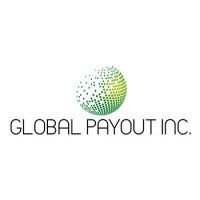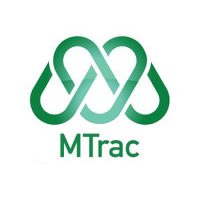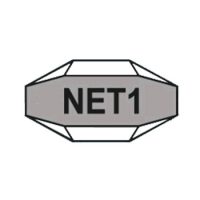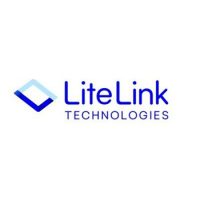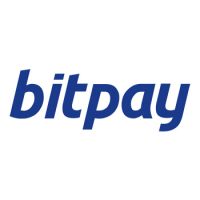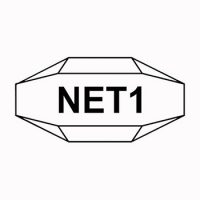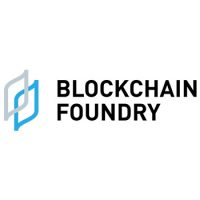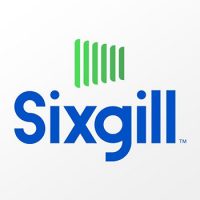Blockchain
Sustainable Seafood Gets a Boost from IBM Blockchain Technology for Insight into the Journey from Sea to Table

Atea, IBM (NYSE: IBM) and Sjømatbedriftene, the Norwegian Seafood Association, today announced a new cross-industry collaboration to use blockchain technology to share supply chain data throughout Norway’s seafood industry to provide safer, better seafood to consumers worldwide.
Several Norwegian seafood companies are now in the process of putting data onto the network. One of these companies is Kvarøy Arctic, a leading provider of naturally sea farmed salmon, who will soon begin delivering products to leading retailers in the United States and Canada using the tracking and provenance technology. BioMar, a leading provider of high-grade fish feed, has also joined the network allowing Nordic seafood companies to provide insight into the origin and quality of seafood as well as the quality of feed the fish consume.
“It is important for our customers to know that the seafood they eat is not only safe but produced in a sustainable and healthy manner,” says Alf-Gøran Knutsen, CEO of Kvarøy Arctic. “Blockchain lets us share the fish’s journey from the ocean to the store. This is now more timely than ever, as consumers want more information about where the food they eat comes from.”
Norwegian seafood is known for its quality and the country exported more than 2.7 million tons of seafood in 2019, the equivalent of 25,000 meals per minute. At the same time, monitoring where the fish comes from, its growing and storage conditions, and reducing food waste remain of critical concern to seafood consumers who care deeply about sustainability.
Robert Eriksson, CEO of the Norwegian Seafood Association, believes that the technology will be of great significance going forward and that it will increase the competitive edge of the industry: “Norwegian seafood is known for its quality. Yet we still do not have the ability to trace where the fish came from, how it was grown or how it was stored. This creates the potential for fraud and food waste. Blockchain can help eliminate these problems with a transparent, accountable record of where each fish came from. We believe that this is only the start of something that will mean a great deal for the industry by creating more sustainable food production, which in turn will increase the return for producers,” Eriksson states.
Blockchain technology can help seafood producers create a “single version of the truth” about supply chain events, allowing consumers to trace their seafood products directly back to the source and enabling producers to tell stories about the products, where they come from, and how to prepare them. The private blockchain network records data about catch location and time, supply chain events like shipping updates and customs clearance, and even temperature, which can then be shared with permissioned parties.
According to a recent IBM study, 71% of consumers indicate that traceability is important to them and that they are willing to pay a premium for brands that provide it. Customers are also demanding more documentation about the food they eat. This new blockchain-based network will allow customers in-store to know the fjord where the fish is from, when it was fished, the feed it has eaten and whether the facility uses sustainable methods. Customs agencies will be able to more easily access data about volume and location of shipments to expedite customs clearance. By sharing all this information across the supply chain, seafood producers who invest in quality will also be able to charge a premium, increasing pay for the people who catch your fish.
“The Norwegian seafood industry exports more than $800 million worth of fish a year, making this an incredible opportunity to improve the quality of the products Norway shares with the world. While this specific application of the technology will be used in the seafood industry, we feel it has great potential in other prominent Nordic industries such as agriculture and retail. Working through the Atea Innovation Center, we will help network members innovate using the platform and drive new efficiencies,” says Steinar Sønsteby, CEO of Atea ASA.
The blockchain network uses IBM Blockchain Transparent Supply, an innovative offering from IBM using the underlying technology behind Food Trust. It enables organizations and consortia to rapidly build out their own sustainable blockchain-based ecosystem for improved supply chain operations across numerous industries. IBM Blockchain Transparent Supply promotes transparency and collaboration, allowing networks to manage their own membership, securely share documents and create a permanent record of the history and lifecycle of physical and digital assets.
“Blockchain is about enhancing flexibility and transparency, and IBM Blockchain Transparent Supply provides just that to clients who are interested in rapidly launching their own blockchain network with ecosystem partners, and using their own branding,” said IBM Food Trust General Manager Raj Rao. “This powerful technology gives network members the option to develop their own governance and determine how and what information is shared.”
Blockchain
Halving weakness sees $206 million exit crypto funds, Bitcoin miners pivot to AI

Leading up to Friday’s Bitcoin (BTC) halving, investors opted to remain on the sidelines rather than increase their exposure to cryptocurrencies. CoinShares’ latest report on digital asset fund flows reveals that crypto funds experienced $206 million in outflows last week, while trading volumes for Exchange-Traded Products (ETPs) dropped to $18 billion.
James Butterfill, head of research at CoinShares, noted, “These volumes represent a lower percentage of total Bitcoin volumes (which continue to rise) at 28%, compared to 55% a month ago.” He attributed this decline in investor appetite to expectations that the Federal Reserve would maintain interest rates at elevated levels for a longer duration.
In terms of regional flows, the United States led the outflows with $244 million exiting incumbent ETFs by the week ending April 19. Butterfill highlighted that newly issued ETFs still received inflows, albeit at lower levels compared to previous weeks. Germany and Sweden saw outflows of $8.3 million and $6.7 million, respectively, while Canada experienced inflows of $29.9 million. Switzerland, Brazil, and Australia also witnessed inflows of $7.8 million, $5.5 million, and $2.2 million, respectively.
Butterfill observed that although Bitcoin saw outflows of $192 million, there were minimal flows into short-Bitcoin positions. Ethereum (ETH) experienced outflows of $34 million for the sixth consecutive week. However, multi-asset funds saw improved sentiment, attracting $8.6 million in inflows. Additionally, Litecoin (LTC) and Chainlink (LINK) received inflows of $3.2 million and $1.7 million, respectively.
The report highlighted that blockchain equities sustained their 11th consecutive week of outflows, totaling $9 million, as investors remained concerned about the halving’s impact on mining companies.
In a separate analysis of the post-halving crypto mining industry, CoinShares analysts suggested that many miners might transition to serving the artificial intelligence (AI) sector, which has become more lucrative. They anticipated a shift towards AI in energy-secure locations, potentially leading to Bitcoin mining operations relocating to stranded energy sites.
The analysts projected a 10% decline in the Bitcoin network’s hash rate after the halving as miners deactivate unprofitable ASICs. However, they expected the hash rate to reach 700 exahash (EH/s) by 2025. As of the current data, the Bitcoin hash rate stands at 596.22 EH/s.
The report also noted that substantial cost increases are anticipated due to the halving, with electricity and production costs nearly doubling. Mitigation strategies include optimizing energy costs, enhancing mining efficiency, and securing favorable hardware procurement terms. Miners are actively managing financial liabilities, with some utilizing excess cash to significantly reduce debt.
Source: kitco.com
The post Halving weakness sees $206 million exit crypto funds, Bitcoin miners pivot to AI appeared first on HIPTHER Alerts.
Blockchain
NYSE gauges interest in 24/7 stock trading like crypto

According to reports, the New York Stock Exchange (NYSE) is exploring the possibility of introducing round-the-clock trading, a model akin to that of cryptocurrency markets. In a bid to gauge market sentiment, NYSE’s data analytics team has circulated a survey among market participants. The survey seeks feedback on whether there is support for 24/7 or extended weekday trading hours and, if so, what measures should be implemented to safeguard traders against overnight price fluctuations. As of now, NYSE, alongside Nasdaq and the Chicago Board Options Exchange, operates from Monday to Friday, spanning from 9:30 am to 4:00 pm Eastern Time.
In the United States, assets like cryptocurrencies, United States Treasurys, foreign exchange, and major stock index futures are already tradable 24/7. Certain brokerages, such as Robinhood and Interactive Brokers, provide access to U.S. stocks throughout the week via a “dark pool” trading venue, catering to international retail investors during their local trading hours.
However, recent reports indicated that Robinhood suspended its 24-hour trading services amidst heightened tensions between Israel and Iran, prompting concerns among investors regarding the sustainability of continuous trading.
Effectively managing liquidity in a 24/7 trading environment has proven challenging for trading platforms within the cryptocurrency industry.
According to cryptocurrency research firm Kaiko, there’s often a mismatch between the operating hours of traditional financial institutions and the needs of major crypto traders and market makers. Traders frequently find themselves losing sleep during periods of extreme market volatility.
While the results of NYSE’s survey haven’t been revealed, Tom Hearden, a senior trader at Skylands Capital, conducted his own poll among his 19,300 followers, asking if they would support NYSE transitioning to 24/7 trading hours. Interestingly, over 70% of the 1,459 respondents voted “No.”
NYSE’s survey coincides with the efforts of startup firm 24X National Exchange, which is seeking approval from the Securities and Exchange Commission (SEC) to launch the first exchange in the country operating round-the-clock.
The FT said, citing two persons familiar with the subject, that the SEC has “months” to study the proposed rule change, and other relevant issues, such who should shoulder expenses and the function of clearing houses, are already being considered by other stakeholders.
“How loud they will be playing in the middle of the night is unknown to me. However, the decision of whether something is commercially feasible or not actually shouldn’t be made by the SEC, James Angel, a Georgetown University finance professor, told FT.
“I support letting the market make the decision. We’re all better off if it succeeds, and the exchange’s stockholders lose out if it fails.
After the company withdrew an application in March 2023, alleging operational and technological concerns, it is the second attempt to receive SEC clearance.
Source: cointelegraph.com
The post NYSE gauges interest in 24/7 stock trading like crypto appeared first on HIPTHER Alerts.
Blockchain
Online Banking Market to Grow at CAGR of 14.20% through 2033, Key Takeaways of Digital Banking, Banking Ecosystem, Financial Giants & Disruptive Startups
-

 Blockchain Press Releases6 days ago
Blockchain Press Releases6 days agoCanaan Shines at Blockchain Life 2024 in Dubai
-

 Blockchain6 days ago
Blockchain6 days agoQuantum eMotion Files a Patent for Quantum-based Blockchain Wallet Under the Patent Cooperation Treaty (PCT)
-

 Blockchain5 days ago
Blockchain5 days agoPhoenix Group Engages BHM Capital as Liquidity Provider to Boost ADX Liquidity and Enhance Market Dynamics
-

 Blockchain Press Releases6 days ago
Blockchain Press Releases6 days agoBybit Institutional Report 2024: Institutions Become Bullish and Eye Challenger Chains, while VC Funding Resurges for Infrastructure, Gaming, and AI
-

 Blockchain6 days ago
Blockchain6 days agoElizabeth Warren Urges Treasury Secretary Yellen to Implement Strong AML/CFT Measures for Stablecoins
-

 Blockchain Press Releases7 days ago
Blockchain Press Releases7 days agoBybit and Franck Muller Partner with Sidus Heroes to Launch Cosmic Gears: A Pioneering Web3 Game with a $250,000 Prize Pool and Exclusive Watch Collection
-

 Blockchain5 days ago
Blockchain5 days agoCrypto fans count down to bitcoin’s ‘halving’
-

 Blockchain5 days ago
Blockchain5 days agoTether USDT stablecoin goes live on TON blockchain


















